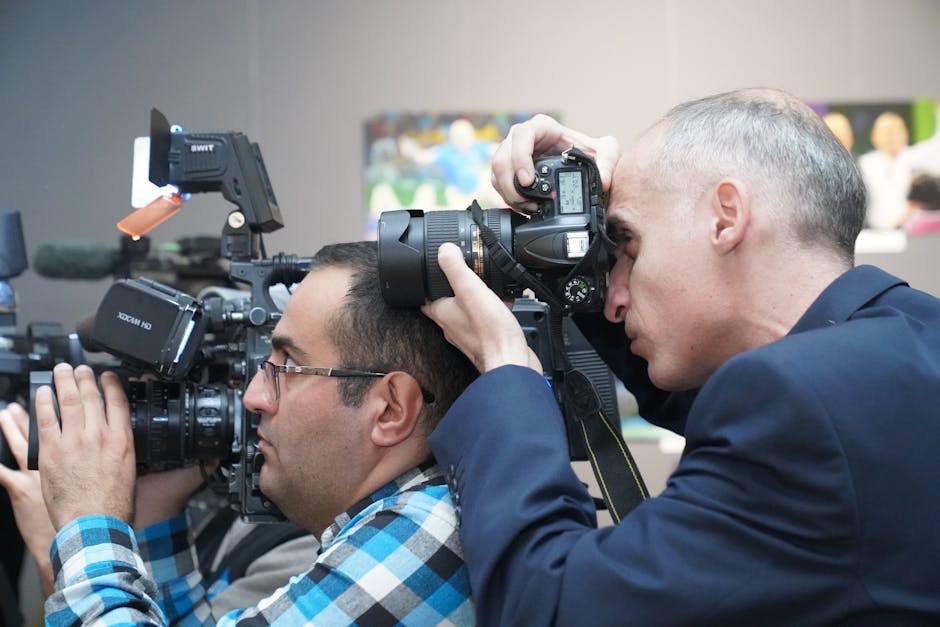Introduction: The Shift Is Real
Streaming didn’t just show up—it took over. Over the last decade, what started as a niche add-on for bored cable users has turned into the core of how people consume content. Traditional broadcasters are watching their primetime slots collect dust while platforms like Netflix, Hulu, and Disney+ draw millions on demand, whenever, wherever.
This isn’t a trend—it’s the new baseline. Streaming services aren’t just one option in the mix anymore; they’ve become the main delivery system for scripted TV, films, and now even live events. Audiences expect flexibility, personalization, and global variety, and the old guard can’t keep up without bending to streaming rules. For creators, producers, and distributors, this shift changes everything. The big screen is now in your pocket, and it’s on 24/7. If you’re not building with that in mind, you’re building for the past.
The Death of Prime Time
Prime time used to mean something. An 8 PM slot could make or break a show. Now? Time doesn’t matter. Audiences stream content when they want, how they want—on commutes, in bed, during lunch breaks. On-demand viewing has crushed the traditional time slot model. Cable schedules are becoming relics. Viewers expect control, not appointments.
Binge culture didn’t just change how we watch—it changed how creators produce. Shows are now designed to be consumed in clusters, not episodes. Pacing is tighter, hooks are sharper, and cliffhangers aren’t just narrative tools—they’re retention strategies. Series drop entire seasons at once because dragging things out just causes people to drift.
Networks didn’t see it coming, and they’re still scrambling. Some are building their own platforms. Others are licensing content to streaming giants just to stay relevant. But the bottom line stays the same: if you’re not offering flexibility, you’re fighting a losing battle. The audience already chose—and they chose chaos over clockwork.
Global Reach, Local Flavors
Streaming platforms are going global—but the smart ones aren’t just exporting Hollywood hits. They’re investing in regional talent and local stories. Netflix doubled down on Korean dramas. Disney+ launched originals in Latin America. Amazon is eyeing Southeast Asia. Why? Because people want to see themselves on screen—in their language, in their culture, told in a voice that feels familiar.
Subbed and dubbed content has come a long way. It’s not just translation—it’s localization. That means recasting voice actors to match regional dialects. Swapping dialogue references to better fit the vibe. Platforms are retooling shows to land emotionally in markets far from where they were produced.
The flip side? Creators outside of the traditional studio system are finally getting their shot. Original content from Nigeria, India, Poland, Brazil—it’s finding homes, and audiences, on global platforms. You don’t need Hollywood credentials to go global anymore. All you need is a story that travels, and a platform that pushes it.
This is the moment for independent voices to step in and reshape what global content looks—and sounds—like.
Data-Driven Storytelling
In 2024, the creative gut-check has been replaced with a spreadsheet. Streaming giants like Netflix, Amazon, and Disney+ now lean heavily on audience data to decide what gets made. Every pause, rewind, binge session, or skipped intro feeds into a pool of insight. If a boxing docuseries keeps viewers locked in for more than 80% of the run time, expect another. If supernatural teen dramas trend in multiple regions, there’s a greenlight waiting in someone’s inbox.
Algorithms do more than just suggest content—they shape it before it’s filmed. Producers pitch ideas tailor-made to fit proven engagement patterns. Writers are nudged toward formats and genres that retain viewers longer. It’s efficient, yes. But it’s also risky.
The biggest danger? Echo chambers. When data dictates the vision, originality can get sidelined. Creative decisions risk becoming formulaic—more of what performed well yesterday, not what moves culture forward tomorrow. There’s less room for surprise, slower room for experimentation.
Still, for creators who know how to work within (or around) the system, the payoff is real. Clarity over what resonates can be empowering—as long as the human element doesn’t get crushed under too many analytics dashboards.
Distribution Without Borders
Direct-to-consumer is no longer a buzzword—it’s the standard. Streaming services have broken the old paradigm where studios relied on networks, theaters, and international distributors to get content out. Now, platforms like Netflix, Disney+, and Apple TV+ push content globally, instantly. No more staggered release windows. No more waiting three months for a foreign debut. If it drops, it drops everywhere.
This shift smooths out access for viewers, but it’s also turned the entire licensing and syndication model on its head. Traditional middlemen—TV networks, theatrical distributors, even DVD deals—are either out of the equation or fighting to stay relevant. That means content creators and studios are navigating tighter deals, new metrics, and leaner pipelines.
Cinema hasn’t escaped unscathed either. With major feature films getting same-day digital releases, the theater experience is now a luxury, not a default. The economics of a film’s success are shifting from box office to stream counts and subscriber retention. For better or worse, the gatekeepers are changing—and they work in the cloud now.
The New Gatekeepers
Streaming platforms aren’t just pipelines anymore—they’re the editors, publishers, and tastemakers. Netflix, Apple TV+, Disney+, and Amazon Prime have shifted from being tech disruptors to full-blown media overlords. They don’t just distribute content; they decide what deserves attention, who gets the green light, and which projects are kept in the shadows. That means fewer steps between creation and audience, sure—but what’s lost is the variety that came with a more diverse distribution ecosystem.
More consolidation means fewer doors to knock on. With mergers and acquisitions stacking up over the past five years, the playing field is narrowing fast. Indie creators and smaller studios now have to play by the rules of a shrinking list of power players—or fight for scraps in niche corners of the web.
So who wins? Usually those with deep pockets, big names, or data-driven backing. Meanwhile, promising but unconventional voices risk getting algorithmically ignored. Control isn’t just at the top—it’s baked into what the viewer sees first. Visibility is the new currency, and streaming platforms are the ones minting it.
Industry Crossovers
The old lines between film, TV, music, and gaming are barely lines anymore—they’re smudges. Streaming platforms are no longer just delivery vehicles for shows and movies. They’re evolving into ecosystems where entertainment takes new shapes. Think Netflix’s “Bandersnatch,” where viewers make decisions that shape the story. That kind of interactive, hybrid format cracked something open. Since then, we’ve seen game-inspired storytelling, music documentaries doubling as album launches, and series adapted from video game lore pull massive numbers.
Platforms are betting big on this crossover energy. It’s not just about pulling in viewers—it’s about keeping them invested with novel, often experimental formats. Music labels use streaming shows as narrative vehicles. Game developers drop cinematic-quality trailers as series pilots. Filmmakers stitch in elements from live performances or choose-your-own-adventure mechanics.
Streaming has become a sandbox. Safe? Not always. Controlled? Hardly. But it’s flexible, and that’s where the juice is. Creators who think outside genre, beyond category, and through multiple mediums are the ones redefining what storytelling actually means—for the viewer and for the future.
Not Just Entertainment: News & Social Impact Content
Streaming platforms aren’t just competing for your downtime—they’re locking in your attention with real-world relevance. Over the past few years, there’s been a sharp rise in docuseries, investigative journalism, and platform-funded documentaries. It’s not just true crime and celebrity exposés anymore. We’re talking deep dives into political movements, climate change, tech ethics, and global conflicts—crafted for binge-worthy consumption.
What once belonged to cable news or public broadcasters now lives on Netflix, Hulu, and YouTube Originals. These platforms are turning slow-burn journalism into gripping content by using high production values and serialized storytelling. And it’s working. Audiences are watching not just to be informed, but to feel something—and more importantly, to act.
This isn’t just a content shift; it’s a cultural one. Streaming platforms now play a large, if unofficial, role in shaping public opinion. What trends on these services doesn’t just entertain—it influences elections, social movements, and public policy. Credibility still matters, but format and delivery now carry just as much weight.
For more on how digital spaces are reshaping the newscycle, check out The Role of Social Media in Today’s News Cycle.
What It Means for the Future
Streaming services have permanently altered the storytelling and content distribution landscape. As the dust settles, creators and platforms alike are navigating a new phase—one that favors innovation, flexibility, and direct audience engagement over traditional dominance.
Alternate Paths for Creators
The streaming era has opened doors for creators beyond the legacy gatekeepers of Hollywood or television networks. Now, an independent filmmaker, podcaster, or niche storyteller can reach global audiences through digital platforms.
Key shifts include:
- Self-produced content on platforms like YouTube, Vimeo, or Amazon Prime Video Direct
- Crowdfunding and patron-based models (e.g., Patreon, Kickstarter, Substack)
- Creator-led streaming channels and apps
- Niche content aggregators and boutique streamers seeking specialty work
These new pathways give creators more control over their work, distribution, and monetization—but they also come with the burden of self-promotion and platform competition.
The Challenge of Streaming Fatigue
With so many platforms, shows, and formats, viewers are experiencing choice paralysis.
Important trends to watch:
- Subscription fatigue: The costs pile up as users juggle Netflix, Hulu, Disney+, and others
- Content oversaturation: Not all content gets watched—visibility is scarce without marketing push
- User burnout: Constant new releases can overwhelm viewers, leading to shorter attention spans and fickle loyalty
For content creators, this means standing out requires more than good stories. It now demands smarter branding, efficient promotion, and tighter community engagement.
Final Thought: Adaptability Over Legacy
The foundational truth of this streaming evolution? Flexibility is everything. Precisely because the distribution landscape is constantly shifting, creators and publishers must evolve quickly or risk becoming obsolete. Legacy status no longer guarantees success.
- Winners will be those who adapt quickly to new formats, tools, and viewer behaviors
- Data-informed creativity will serve as the bridge between art and audience
- Brand consistency, experimentation, and authenticity will outrun nostalgia and familiarity
The war for attention won’t be won by the oldest name in the industry—but by the one most willing to keep moving.




